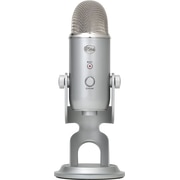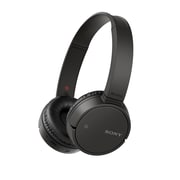[clickToTweet tweet=”10 million Canadians listened to a podcast this year. ” quote=”10 million Canadians listened to a podcast this year. ” theme=”style2″]
Why Start a Podcast?
Starting a podcast is a fabulous way to grow your following and increase your presentation and technical skills. Most importantly it is a great way to establish authority in your field of expertise.
Last but not least, it is a great way to repurpose your content so what are you waiting for?
Where’s the Proof? Podcast Stats Please!
Podcasting is huge. Looking at this pie chart, courtesy of Edison Research, 30% of time spent listening to audio sources are podcasts. This is impressive when compared to AM/FM radio’s 21% and owned music’s 23%.
Podcasts also have a balanced demographic with the listeners being equally male and female adults between the ages of 18-44.
Lastly, a podcast allows you to position yourself as an authority on your topic. Not only does this help build your audience but it also makes it easier for you to sell your product or service since you’re the credible source. Being seen as an authority can help influence customers to purchase your products.
Starting a Podcast: How Podcasting Works
To start a podcast, as a bare minimum, you only need to:
- Come up with a concept (a topic, name, format, and target length for each episode).
- Design artwork and write a description to “brand” your podcast.
- Record and edit your audio files (such as .MP3s). A microphone is recommended.
- Find a place to host them (such as a file host that specializes in podcast hosting, like Libsyn).
- Syndicate these audio files into what’s called an “RSS feed” so that it can be distributed through iTunes as well as downloaded or streamed on any device on-demand.Libysen does a lot of this work for you through their share section. Including hooking up your social media account (Twitter).
What Podcasting Equipment Do I need?
Staples Canada is a great place to start. The first thing you will want is a microphone. Don’t just use your computer’s audio. (see below)
- Artwork (minimum 1400×1400, maximum 2048×2048) – Your podcast artwork needs to be beautiful. Don’t neglect this aspect of your podcast as Apple and iTunes seem to only want to feature podcasts (more on this later) if they have professional looking artwork.
- Podcast name – Your podcast name should speak to you and your audience. Ideally, listeners should know what the podcast is all about from just the name alone. Having a very descriptive name can help.
- Podcast category/subcategory – There are dozens of different categories and subcategories on iTunes. Everything from arts and politics to comedy and religion. Choose the category that best suits your podcast’s topic. It doesn’t need to be the exact topic. If you’re struggling to decide on a category, look at other podcasts on iTunes that are similar to yours and take a look at what category and subcategory they use.
- Podcast description – You don’t want to skimp out on the description of your podcast. You will want to include as many keywords and phrases as possible that describe your podcast best. This is going to help with the SEO of your podcast listing on websites such as iTunes. iTunes is a search engine and most people that find your podcast, will likely find it through a search, at least initially when your podcast is new.
As your podcast grows, it’s also a good idea to eventually include the names of big guests you’ve had on and the topics of your most popular episodes. This way, new listeners know immediately which podcast episodes to check out, making new listeners more likely to become fans. - Podcast rating – Will your podcast be clean? Considering your rating is important as you want to be consistent with it. Ideally, every episode should either be clean or not.
What Equipment and Software You Need
Staples Canada’s website is a great place to start shopping for equipment. For one, you can go online and check out their equipment but even better you can visit a store for more support. The site tells you which products are available ( Instore/Online) if you want to check them out or get advice from the Staples consultants.
Sony MDRZX220BT/B Wireless Bluetooth Over-Ear Headphones, Black
- Wirelessly stream your favorite tracks with Bluetooth
- Near Field Communication (NFC) technology makes complex set-up sequences a thing of the past
- Hear more of the detail in all your favorite songs thanks to 1.18″ dome drivers
Audio Recording Software
The software recommended in this section will allow you to record the audio from your microphone and save it as an MP3 file. The following software will also allow you to edit your recordings, which I’ll go over in more detail later in this guide.
- Adobe Audition (PC/Mac) $19.99 USD per month – If you want really powerful audio editing software with all the bells and whistles possible, Adobe has it with Audition. It might be a little more than what you’ll need to edit just a podcast, but if you’re using a mixer and high-end equipment, it might be a good idea to look at Adobe Audition as well.
- Audacity (PC/Mac) Free – Audacity is a great alternative to paid, premium audio editing software. It’s easy to use and there are a lot of tutorials available online to help you learn how to use it.
- GarageBand (Mac) Free – GarageBand comes packaged with all MacBooks and is good enough for most of your audio editing needs. GarageBand allows you to record the audio from your microphone and save it as an MP3.
- Zoom – Video conferencing software that is easy to invite guests on remotely to your podcast. Simply record the interview and download. Zoom also has screen recorder.
- Filmora – I use Filmora to edit my podcast clips (handy which you are slicing intros and content). I find it easier than a lot of the more advanced software listed above. Then, export the file as an MP3 and upload to Libysen to publish your podcast. Also, Filmora can be used for video or audio only – make two versions if you like. Often, podcasters love to repurpose their work so this makes doing so easier.
Outsourcing your Edits
I am not going to lie, this is not a fast process. However, in time you can become faster as you get into a rhythm with the process. If you are tech-adverse I would look at hiring a podcast editor or producer. Keep track of how long it takes you to produce so you know how much it is worth to outsource or ask someone who is already podcasting how much time it takes up. If you end up with a Podcast sponsor you might find outsourcing is well worth it.
Hosting Your Podcast
You’ll need a separate host just for your audio files. Even if you have a web host already and a website, you don’t want to host your MP3s on the same server. Those shared web hosts don’t have the bandwidth or speed for the demand that downloading and streaming MP3s creates. Fortunately, media hosts are affordable. Here are the ones I use and recommend:
- LibSyn – Podcast hosting starting at $5 a month for 50mb of space a month with unlimited bandwidth.
- Blubrry – Podcast hosting starting at $12 a month for 100mb of space a month with unlimited bandwidth.
Currently, I am paying $15 US per month for my Thriveinmylife podcast (Women in Biz Podcast).
Being a Canadian podcaster is more expensive as everything is in US dollars. CHECK IT OUT HERE. I have stopped uploading individual artwork to keep my files sizes down so that I won’t have to upgrade my package anytime soon.
Think about how many episodes you’ll be publishing per month. For example, let’s say you’re releasing a new episode every week. That’s roughly 4 episodes a month. If your episodes are an hour long each, every episode might be around 50mb. This means you’ll likely need over 200mb per month. This is just an example, you’ll need to figure out what plan is best for your needs and proceed from there. Generally, you’re better off paying for the option that allows for a little more space than you need, just in case.
This RSS feed is what you’ll be submitting to podcast directories such as iTunes. You only need to submit this feed once. Every time you upload a new episode to your media host, the feed is automatically updated on iTunes and other directories you’ve submitted the podcast to. I will go over this in more detail in the next section.
Submitting Your Podcast to the Right Channels
There are many different directories you can put your podcast in. I’m going to recommend the most popular but feel free to distribute your podcast across as many channels as you can. Now’s the time to have all that information ready that I said you would be required to have, at the beginning of this guide. You’re going to be asked for your podcast’s name, description, category, artwork, and a few other things.
- iTunes – iTunes is the largest podcast directory and it should certainly be your focus. If you’re only going to submit your podcast to one directory, this one should be it. Click here to submit your podcast and RSS feed to iTunes.
- Stitcher – Stitcher is the second largest podcast directory and another way for people to discover your podcast. Click here to submit your podcast and RSS feed to Stitcher.
- You might want to also put your podcast up on SoundCloud and YouTube to reach more people.
Launching Your Podcast
- It is important to ask your network to leave reviews of your podcast – especially on Itunes if you hope to be featured on the “New and Noteworthy” Section of iTunes podcasts directory listing (see above for some suggestions)
- Embed your podcast from the software you have selected onto your website. Many podcasters setup a dedicated website just for their podcast
- Publish your podcast to various podcast directories
- Look at your downloads and study what is making certain podcast episodes more popular than others
- Look for influential guests to participate in your podcast (that way they will spread the word too)
- Share frequently on social media
- Be consistent when you release content – is it every Sunday? First day of the month?
Looking for Inspiration? Here are my Favourite Podcasts Currently:
- Fierce Feminine Podcast
- The Light Work Podcast with Danielle Laporte (a WIBN past speaker)
- Young Money with Tracey Bissett (WIBN member)
- #ThriveinmyLife Podcast (for Women in Business)
I hope this guide will give you the basics to decide if podcasting is right for you.
Looking for more information? Please read How to Start a Successful Podcast for Under $100 – That is where I got reference many of the resources.
Staples Canada is a proud sponsor of Women in Biz Network since 2014.



